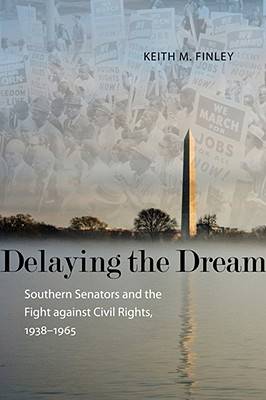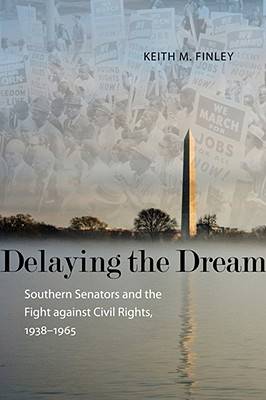
- Retrait gratuit dans votre magasin Club
- 7.000.000 titres dans notre catalogue
- Payer en toute sécurité
- Toujours un magasin près de chez vous
- Retrait gratuit dans votre magasin Club
- 7.000.000 titres dans notre catalogue
- Payer en toute sécurité
- Toujours un magasin près de chez vous
Description
Few historical events lend themselves to such a sharp delineation between right and wrong as does the civil rights struggle. Consequently, many historical accounts of white resistance to civil rights legislation emphasize the ferocity of the opposition, from the Ole Miss riots to the depredations of Eugene "Bull" Conner's Birmingham police force to George Wallace's stand on the schoolhouse steps. While such hostile episodes frequently occurred in the Jim Crow South, civil rights adversaries also employed other, less confrontational but remarkably successful, tactics to deny equal rights to black Americans. In Delaying the Dream, Keith M. Finley explores gradations in the opposition by examining how the region's principal national spokesmen--its United States senators--addressed themselves to the civil rights question and developed a concerted plan of action to thwart legislation: the use of strategic delay.
Prior to World War II, Finley explains, southern senators recognized the fall of segregation as inevitable and consciously changed their tactics to delay, rather than prevent, defeat, enabling them to frustrate civil rights advances for decades. As public support for civil rights grew, southern senators transformed their arguments to limit the use of overt racism and appeal to northerners. They granted minor concessions on bills only tangentially related to civil rights while emasculating those with more substantive provisions. They garnered support by nationalizing their defense of sectional interests and linked their defense of segregation with constitutional principles to curry favor with non-southern politicians. While the senators achieved success at the federal level, Finley shows, they failed to challenge local racial agitators in the South, allowing extremism to flourish. The escalation of white assaults on peaceful protesters in the 1950s and 1960s finally prompted northerners to question southern claims of tranquility under Jim Crow. When they did, segregation came under direct attack, and the principles that had informed strategic delay became obsolete. Finley's analysis goes beyond traditional images of the quest for racial equality--the heroic struggle, the southern extremism, the filibusters--to reveal another side to the conflict. By focusing on strategic delay and the senators' foresight in recognizing the need for this tactic, Delaying the Dream adds a fresh perspective to the canon on the civil rights era in modern American history.Spécifications
Parties prenantes
- Auteur(s) :
- Editeur:
Contenu
- Nombre de pages :
- 352
- Langue:
- Anglais
- Collection :
Caractéristiques
- EAN:
- 9780807133453
- Date de parution :
- 01-11-08
- Format:
- Livre relié
- Format numérique:
- Genaaid
- Dimensions :
- 147 mm x 229 mm
- Poids :
- 657 g







